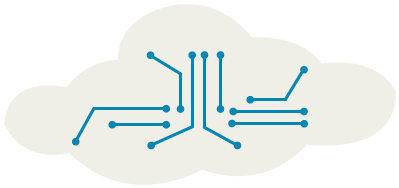“From good to great”
Users of Dynamics 365, Microsoft’s cloud CRM system, benefit from numerous sales dashboards and views, which sales teams can customise to fit each individual’s needs. Highly flexible, these report right across the selling process and show the status of your sales pipeline.
This is good.
However, if you want to be really great, then our advice is to drive sales performance by gaining crucial insights from the sales data you already have in Dynamics 365, by connecting it to Power BI.
Our sales and marketing teams have been using Power BI since the summer of 2016, and the depth and simplicity of analysis have transformed the business. That’s because Power BI offers significantly greater reporting power, so we can visualise performance, understand trends and discover fresh and valuable insights. We can act quickly on these insights, amend our campaigns, and easily find out if they’re working or not.
This is great.
Why boost your CRM with Power BI?
Let’s take a look at how Power BI Sales Dashboard can improve your sales analysis by looking at these four key areas:
What do you want from your CRM system? To help you deliver a great customer service, streamline processes with automated workflows, increase your sales conversion rate and to give you clear insights that guide your decision-making.
If you’re reading this, chances are your CRM system isn’t ticking all those boxes. Here are four signs you urgently need either to develop your CRM system, or scrap it and replace it with a CRM system that will help your business compete and grow.
1. You don’t trust your CRM reports
Your CRM system is only as good as the data it stores. If your reporting is flaky, you’re risking business critical processes relating to sales, marketing and, of course, customer servicing by making flawed decisions based on guesswork or hours of inefficient manual graft – and the risk of human error that goes with that.
If data is suspect, incomplete or just plain incorrect, you need to find out why. Likely, it’s due to either a lack of user training, or a poor CRM layout that is confusing or liable to result in data entry inconsistencies.
2. You have to access multiple systems to build up a customer view
It’s 2017, people. It’s standard to expect a single customer view without having to jump between various systems to get a clear picture of each customer and processes.
If your CRM system doesn’t give you a single view, just think about how much time and effort your business is spending as people check and update the same customer details across multiple systems in unconnected silos.
If this is the case, it’s worth investigating now either how you can adapt your existing CRM system to combine the data and processes from these disparate packages or how you can integrate these systems so that complete customer data is finally accessible to everyone from a single CRM interface.
3. Your CRM system doesn’t fit your processes
This bugbear raises the question: should CRM fit your processes or vice versa?
If it is the case that your proven business processes already work well, then it could make complete sense to configure your CRM system to replicate these.
However, the chances are that your business originally implemented CRM to:
- Improve data quality
- Enhance the efficiency of your processes
- Reduce admin costs
- Improve customer service
Without careful planning, covering these objectives within the framework of your processes, your CRM system will struggle to handle it all, and confused and frustrated users will likely fall back on legacy systems and risky, time-consuming manual processes.

Create a process map for your CRM system
One of the most important components of your CRM project is to develop a process map that defines each step of each process. The process map forms a blueprint that maps to your CRM system.
This applies to regular processes including managing sales leads and service issues. It also applies to workflows specific to your market and company, such as managing applications, events, training courses, contracts, assets and many more.
Map out your timeline for each process and include the rules and logic that you want people to follow. A CRM partner can help translate these workflows into your CRM system, using automated controls including:
- Duplicate checking
- Stage gating
- Calculated fields
- Branch logic
- Email alerts
This is just a sample. There are many more potential CRM functions that will make your process run smoothly and contribute towards a better user experience.
4. You can’t send personalised marketing emails using your CRM system
If your CRM isn’t integrated with your marketing automation system you may be able simply to connect your existing marketing solution with CRM, or switch to a new package such as dotmailer, Click Dimensions or MailChimp.
If, however, you’ve already deployed an integrated marketing system, but you still can’t send personalised emails, then data quality will be a factor.
This is a problem if you want to personalise email messages with CRM field data, which might include, for example, inserting a simple salutation or adding content that adapts dynamically, based on CRM data.
One thing’s for sure: if CRM and marketing automation are to deliver, your marketing team will need to address data issues quickly. They may want to set up a telemarketing campaign to verify and collect data, using behavioural data (for example, which link your customer clicked on) tracked in CRM from earlier emails. You can target messaging and use web forms to encourage recipients to share more details.
Other causes of data entry errors can relate to a need for user training and/or adjustments to the design of your CRM forms. To further improve CRM data input you can customise the following:
- Mandatory fields
- Reposition fields
- Adjust some field types – eg drop-down lists
- Declutter the layout
- Configure guided processes that prompt users to ask questions and collect data.
If you want to find out the best next steps for your CRM system, get in touch. We can help get you on track for tangible success by either improving your existing CRM system, or implementing a new one, with Dynamics 365.
According to the Merkle Group, 63 per cent of CRM initiatives fail. Gartner predicted that 50% of CRM strategies would continue to fail. Typical consequences are a poor ROI for the business, and a poor experience for the customer.
But why do CRM initiatives fail? Bluntly, because of weak, or non-existent, implementation strategies. So let’s look at 10 simple steps for developing a strong CRM implementation strategy that will address your business requirements and help you retain and grow customers.
1. Set up a project team for cross-business buy-in
User adoption is essential for CRM success, so make sure you get buy-in across the business. Build a project team that starts at the top with board level management support and filters through to the teams on the ground.
Make sure it’s cross-departmental, too. For example, sales, marketing, finance, support and services will use CRM on a daily basis, so you should include them in the early planning stages and maintain this involvement. They will help shape your strategy, define its goals, and ensure ongoing cooperation and acceptance.
Your CRM project team should include:
- An executive sponsor
- A project manager and CRM administrator
- A key user from each department
2. Define your CRM vision
Ask yourself why you want a new CRM system? What do you want it to achieve?
Identify these and set high-level goals that will act as your benchmark for the project. Then work out how you can measure the success of these goals.
In terms of defining objectives for your CRM campaign, businesses usually want their CRM project to:
- Provide a single view of each customer relationship
- Improve the quality of management information reporting
- Make business processes more efficient
- Increase lead generation
- Improve account retention and service delivery
3. Prioritise and map your CRM objectives
Take a phased approach, beginning with quick wins, rather than trying to achieve everything at once.
Some objectives will be more important than others, so prioritise them and map out your processes. Make sure your plan is realistic, both in terms of budget and the human and financial resources you’ll need to deliver on your objectives within your time-frame.
4. Identify how you want to report and present your measurements
Specific measurements should be attributed to your specific CRM goals. Think about how you want to present them in terms of reports, charts and dashboards.
5. CRM data capture for tracking purposes and data quality
Define the fields you need to track for each CRM record so you can hit your CRM objectives. This includes working out what type of fields will be used. For example identifying the options you want in your drop-down fields, and which you want set as mandatory to ensure consistent data quality.
Be wary of going overboard here. Early adopters may feel intimidated, confused or frustrated by an excessive number of field requirements. Plus it will add to your administration overheads.
6. Prepare your data for migration to your new CRM system
Don’t avoid or underestimate this stage or it could all go horribly wrong. You need to work out the resources you require so you can consolidate and prepare your existing data for migration. Think about these six questions:
- What current data needs to be imported?
- How good is the data quality?
- Does it require data cleansing?
- Where is current data stored?
- How many years back do you need to go with historic, relationship data?
- What duplication rules need to be set?
7. Plan for CRM integration with your other business applications
Work out which applications your new CRM system will need to integrate with, and which direction the data needs to flow. This could be integrating with your email marketing, web forms, SharePoint or ecommerce platform.
So, if one of your goals is to create a single view of each relationship, integrating your new CRM system with external data sources is likely to be a high priority.
In terms of flow, your CRM will pull data from other applications as well as push them to other sources. For example, when a CRM sales opportunity is converted, it can create a new order in the back-office ERP system.
8. Manage user security, including permissions and controls
Flexible CRM solutions, such as that within Dynamics 365, will allow you to create advanced user permissions. This can include team and regional management, so you can control precisely which records users are entitled to access and what controls they can use.
For example, if you work in recruitment, you may not want every CRM user to be able to export data to Excel.
So make a list of the users, roles and groups that will have CRM permissions, and define their levels of access.
9. Identify the risks to your CRM migration
Work out what could possibly threaten the success of your CRM migration. How significant are these threats? No project is without risks, and it makes sense to be as prepared as possible for when things go wrong.
For example, your CRM migration could be at risk if:
- The CRM technology database isn’t flexible enough to adapt to your processes
- It lacks the scalability required to meet your business growth plans
- You have failed to define support processes or identify existing gaps
- Your people are poorly trained, under-resourced or simply make a mistake
10. Work with the business to develop a CRM user adoption plan with buy-in
Technology such as Dynamics 365 is a brilliant enabler of CRM. But this can be irrelevant without user adoption, understand and support. Without those key elements, even the greatest system in the world will struggle to deliver the desired results for your CRM programme.
There are four key things to remember when developing a CRM user adoption programme, as follows:
- Make sure users understand the reasons behind implementing a new CRM system
- Listen to their ideas, needs and concerns
- Provide ongoing training and support
- Measure usage that focuses on positive reinforcement
So there you have 10 things to consider when you’re writing your CRM plan. If you’d like to find out how we can help your business, please get in touch.
Recruiters have always been ahead of the curve when it comes to technology. The successful recruiters have continually found ways to adopt technology to remain relevant, enterprising and unique in a congested environment.
A brief history of recruiters using the cloud
Historically, the recruitment industry was a paper-based trade. Staff used advertisements in the paper, Rolodex, letter writing, face to face interviews/meetings and smart suited appointments.
Then technology changed everything. The cutting-edge recruiters used email to contact more people and get their candidates details to clients quicker than the competition. The industry replaced Rolodex with on-premise CRM but sadly found that this left them open to internal theft. Many a recruitment company has been started with a USB stick full of data from your previous employer! Subsequently, a move to hosted CRM systems gave rise to a more secure platform to store and share data. The sector developed bespoke systems to increase security and capture competitive intelligence.
The introduction of job boards such as Monster revolutionised the industry. Many other sectors have never experienced such a transformation, yet recruiters saw the opportunity and ran with it. But this revolution didn’t last long – soon new technologies, new routes to markets, new ways to be the ‘best in the sector’ arose. LinkedIn is heavily utilised, Twitter, Facebook and other social selling sites keep recruiters well connected with their target market. Blogging, vlogging the list continues of how this fast-paced, dynamic sector has grabbed technology with both hands and driven its functionality forward in the business world.

What are the next technology opportunities for recruiters?
Evolving cloud applications: The application suite available through Microsoft Office 365 provides a dozen+ evergreen applications that offer multiple routes to market for less than a tenner per month.
Intelligent Data Analysis: “Data Scientist was the most in-demand job of 2016”. Understanding your data allows you to accurately predict how to spend your time, where to invest in your business and what trends work for your business.
The Internet of Things: Enterprising entrepreneurs are using the resources around them to capture data to drive their business.
How can I adopt these technologies?
Every IT company worth their salt are selling Microsoft Office 365 but the vast majority know very little about it other than reading a few FAQ pages on the tardis that is the Microsoft website. What you need is a partner who understands the technology and makes it their business to keep up to date with this fast-evolving technology. Many recruitment firms own 365 but most of them only use 20%. The other 80% is very valuable and most of your competitors are not using it!
How is your client behaving and changing? Who is going to be your next quarter’s worth of valuable candidates? What is the next growth market? Using data analysis that integrates with your CRM, social media and LinkedIn will become vital to your role. Microsoft have purchased LinkedIn so you need to understand how to use Power BI (their data analysis tool) to get the most out of LinkedIn.
The Azure platform is a powerful, secure and infinitely scalable platform that is being used by businesses, not just for IT but for core business functionality. Machine learning is allowing businesses to take everyday information and turn it into actionable outputs for business growth.
It is easier than it sounds
The vast majority of you have done this all before – you have adopted new technologies (often cloud technologies) and harnessed them to make more placements for your business. Utilising cloud applications, Power BI, the Azure platform are the latest developments in your exciting history of cloud adoption. Cloud Direct can help you on this journey by guiding the process, pointing out pitfalls and giving tips for success. Together we will trail blaze new ways to be fantastic recruiters and over-achieve targets in the meantime! Happy hunting.
I recently shared a superb blog about the biggest headaches recruiters face. A survey conducted asked recruiters which problems hinder their success and there were common regular offenders. I have written a complimentary blog that provides solutions to these problems.
Standing out from the crowd
How do you differentiate from the competition? A problem experienced in every industry!
How do you get away from the worthy but samey promises of being; trusted, experienced, specialists etc; with a message that resonates and is believed? Then, how do you get that message out there and heard by your target market?
How cloud technology will help
Do something different from the norm! Create extranets and branded social networking sites to communicate with clients and candidates. Tailor clear messaging to clients and prospects. Use integrated workflows that automatically contact prospects who use key hashtags. You can capitalise on leads, communicate branded messaging directly to your target market and have an online platform to securely network.
Capitalise on co-authoring functionality to improve candidate’s CV’s in real-time. Build trust, unity and enhance your clientele’s résumé to increase the chances of closing job vacancies. You need to be good at improving CV’s of course!
Juggling daily tasks

How do you focus on core tasks when you are bombarded with email, inbound calls, management requests, and LinkedIn messages?
How cloud technology will help
Use cloud technology to automate administrative tasks – this reduces your workload, eradicates human error (we all forget sometimes), and keeps us focussed on our core tasks allowing for momentum in sales calls and sourcing candidates.
Guarantee you have access to your data and applications wherever you are and ensure you can share this information quickly and easily with relevant others.
Reduce commuting by using video conferencing. Increase your number of face to face interviews and speak with major clients regularly using technology rather than having to travel a lot.
IT downtime can be rife, costing businesses many hours and even more money.Ponemon Institute estimate billions of pounds! Get a cloud solution that guarantees uptime so that you are at your most productive!
Additional tips and resources
David Allen’s ‘Getting Things Done’ for stress free productivity
The candidate interview process is my biggest bugbear

How do you keep interviews relevant, succinct, productive and ultimately gain credibility with the best candidates on the market?
How cloud technology will help
Three common mistakes made by many recruiters that instantly put candidates off; (1) too much form filling (2) repetition (3) wasted trips.
Filling out forms. We live in a world where data input should be achieved quickly online and the information will automatically sync with your CRM. If you don’t have this functionality, I imagine you are doing double the admin of those who do. Even more importantly, candidates first impression of your business is form filling.
Don’t ask the candidate the same question again and again as they are passed around the office from department to department. Use technology to share information and avoid repetition.
Meeting a candidate only to find out you can’t place them is hugely time wasting and leaves that candidate with a bitter taste about your brand (I have experienced this first hand regularly). Have a video call to quickly decide “can I place this candidate?”
Stop insisting on meetings for meetings’ sake and instead use video conferences to establish credibility and focus on those candidates who will make you money. Then meet them face to face; not everyone else.
Additional tips and resources
Jeff Haden outlines 12 Simple Steps and has many wider resources around this topic
Unsuitable candidates applying
A well written job specification will alleviate this somewhat. Never just copy and paste what the client sent. Instead, deliver a clear and enticing job ad. How do you distinguish between the wheat and the chaff of prospect clients?
How cloud technology will help
By using CV scanning tools and business analytics, you can match key competencies, skills and experience to filter to the correct prospective candidates. Sourcing the right person becomes targeted and the data cleansed so that you don’t have to scroll through countless CV’s.
Additional tips and resources
Steve Kneeland gives advice on how to avoid hiring the wrong person in his book Hiring People
Engaging candidates sourced online

Perfect, you have found a great candidate. But they are at work, being headhunted by a competitor or have never heard of you so are sceptical about engaging; what are you to do?
How cloud technology will help
You need to build rapport, you need to differentiate from the competition (we’ve covered this), and you need to gain credibility. The quickest way to do this without your sourced candidate having to take annual leave to meet you is to use a video conference and get to know them.
Additional tips and resources
Many of you will use Bullhorn daily (we know them from integration with our cloud solutions) they have written a helpful blog on this very topic.
Further Information
If you want further information about how cloud technology can help recruiters to make more placements, read my blog “The recruitment industry is missing a trick”.
For recruiters, it is imperative to match your candidates with the latest available job opportunities quickly and efficiently. Getting knowledge of placements ahead of your competition, understanding the clients brief and working efficiently will all give you the added edge to meet target and maximise your earning potential. As a former recruitment consultant myself, I understand the pressures and requirements needed in your sector. I have transitioned to cloud sales and wish I’d had my cloud knowledge and resource when I was a recruiter.
I meet business owners every week, many from the recruitment sector and many of them are missing sales because their business systems are hindering growth. To make things worse many businesses have already purchased the solution but they aren’t using it correctly and are therefore wasting money and losing leads month after month.
Recruiters are not maximising the cloud’s potential
The majority of recruiters have already decided cloud is the answer but they don’t know how to use this technology to its full potential. The recruitment industry is guilty of not using the cloud market wisely. Of course, there will be exceptions, but I’ve witnessed many recruiters who are spending their IT budget badly.
There seem to be two camps.
1. Flogging a dead horse
Recruiters who have legacy systems that they are desperately trying to trudge along with. A lack of investment in technology has meant they have old unsupported systems that are working but creaking loudly. Disaster for these companies is often imminent and I fear for people with this strategy.
2. Not using what you own
The other camp have bought a robust cloud solution such as Microsoft Office 365 but are using only a fraction of what is available and missing out on many features that can further their business.

With a few simple changes Cloud Direct can help you to;
- Make more placements
- Stay ahead of your competition
- Improve communication with your clients
- Streamline internal collaboration
- Work efficiently throughout the day
I’m not going to reveal the secrets online but I can tell you that using cloud technology to its full potential is a big part of the solution.
Cloud technology is mainstream
Surveys show that over 92% of businesses will use cloud services in the next six months and this is fast becoming a $500billion business.
Cloud technology is affordable
The world’s biggest companies are in a price war to get their market share of the $500 billion, therefore we have seen cloud consumption costs tumble.
Cloud technology should help the business as well as the IT department
Due to the enormous investment in cloud infrastructure we all have access to data centres that are hyper secure, compliant, infinitely scalable, accessible from anywhere and fine-tuned for elite performance.
Investing in cloud should be a business decision first and an IT decision second. It is about having infrastructure that drives your business goals, increases profits and mitigates risks. To ensure this does indeed occur you need to select a trusted cloud partner to help you navigate the minefield of cloud solutions.
For both camps (the dead horse floggers and under-utilisers), there is help at hand. If you want to ensure that your business has an IT strategy that enables your business strategy please give me a call for a free consultation.
I was recently invited by the Business Continuity Institute (BCI) to speak at their conference in Cambridge. I happily obliged, not least because I can now legitimately tell people I have ‘lectured’ at Cambridge about business continuity strategy – my mother in-law will be so proud!
The lovely folk at BCI taught me four important lessons during my day there.
1. Cambridgeshire has a lot of disasters – planes crashing, petrol pumps leaking, tidal floods (along the river) were just the tip of the iceberg. Fortunately for Cambridgeshire you have a lot of very capable risk analysts. But this day further cemented my recognition that freak occurrences happen a lot more often than you’d expect and they can have catastrophic effects on business.
2. Most businesses aren’t terribly prepared for disaster – despite plentiful warning about taking disaster recovery seriously, the majority of businesses soldier on with their head in the sand. The ‘fingers crossed it doesn’t happen’ approach to disaster remains commonplace.
3. Many businesses are misinformed about the benefits of cloud – select the right cloud provider and your uptime, security, scalability and resiliency will be unparalleled. Sadly, many businesses only read the bad press cloud gets and assumes all cloud providers are the same.

4. Technology is taking over the world – robots are cool but do we really need an app to regulate the temperature of our shoes or to monitor the pace we eat our dinner? I am too old-fashioned for a computerised fork!
The BCI members have seen a lot of disasters in their time and lived to tell the tale. Therefore, I figured if my ‘lecture’ went badly this was the audience to cope! I felt things went pretty well and I taught the BCI crowd a thing or four.
1. Cloud is the obvious choice when considering disaster recovery – your data/applications anytime, anywhere on any device is the bread and butter of cloud and exactly what you need in a disaster.
2. Cloud makes business continuity a value proposition – gain remote access, increase collaboration, access new revenue streams, infinite scalability and peace of mind during a disaster. Disaster recovery need no longer feel like an insurance spend.
3. Most business disasters are not natural disasters – in our experience what is far more common than fires/traffic accidents/flu epidemics are hardware failure or outages, theft (especially cyber-crime) and human error (deleting files). Preparing for these inevitabilities is business critical.
4. Everyone loves a blue hedgehog! – Cloud Direct’s brand logo Eric the blue hedgehog never fails to get a reaction.
 A lot of disasters have happened in Cambridgeshire but I have no evidence to suggest it is any safer anywhere else. If you are a business owner in Cambridgeshire, don’t panic. You don’t have to relocate to pastures safer. You can get extremely resilient cloud solutions from Cloud Direct that will allow you to access your business applications and data, even if a plane crashes into a petrol station in your proximity!
A lot of disasters have happened in Cambridgeshire but I have no evidence to suggest it is any safer anywhere else. If you are a business owner in Cambridgeshire, don’t panic. You don’t have to relocate to pastures safer. You can get extremely resilient cloud solutions from Cloud Direct that will allow you to access your business applications and data, even if a plane crashes into a petrol station in your proximity!
“In the middle of difficulty lies opportunity,” said Albert Einstein. And he knew a thing or two.
When it comes to your IT systems, disaster can strike at any time. A virus, power cut, disgruntled employee or natural disaster can cause tremendous difficulties for an unprepared business. Hopefully, by now you’ll have taken advantage of our free Business Continuity Plan – template, and are well on your way towards good crisis preparedness.
Otherwise, for a small or medium-size business to turn a disaster into an opportunity might initially seem impossible. In the words of Winston Scott, director of Florida Space Port: “At the onset of an emergency, everyone’s IQ goes immediately to ‘0’”.
But with cloud services supporting your data and IT systems, you get the immediate advantage of availability and reliability. The agility that comes with this, means you also get to stay in the game – to keep competing with the big guns.
Five critical reasons for disaster recovery in the cloud
With business continuity and disaster recovery via cloud services, you get:
1. Comprehensive protection and back-up for your entire IT operations within minutes. This includes machines, hardware, operating systems, application software and data. Whether you’re suffering the loss of a single server, complete network failure or a building evacuation, for example, a hosted desktop and Voice over Internet Protocol (VoIP) allows you to run your business as usual from the cloud.
And, of course, the more you move to the cloud, the less you need worry about managing and paying for hardware or infrastructure.
2. A fully managed service means your IT is protected 24/7, regardless of your existing business commitments and priorities.
3. The freedom to focus on your business and customers. Your focus can remain where it should be – on generating business revenue and keeping your customers happy.
4. Guaranteed data and IT systems recovery. A simple automated appliance can:
- Sit on your server and capture snapshots of it
- Convert them into virtual rescue images
- Test their integrity
- Test invocation and rescue
This process will ensure your business continuity through a disaster. But make sure you get a convincing SLA and guaranteed 30-day transition period, so your systems are fully tested in your environment before switching back fully.
5. Security. Your server snapshots should be protected during capture, transfer and storage with encryption and Public Key Infrastructure (PKI) technologies. However, for the highest possible protection of your data and systems, what you really want is overlaid end-to-end ISO 27001 security processes, which are independently audited.
Check out our Business Continuity webinar video to find out more about:
1. How to budget for business continuity
2. How technology can help keep your business in business no matter what
3. How to plan for business continuity
4. How cloud solutions can help.
If you’d like to find out more about how Azure site recovery can help prepare your business for GDPR, or for other GDPR/compliance solutions and certification, our GDPR consultants can help.
Office 365 is your office in the cloud, available when and where you need it. Work anywhere and access the professional tools to get the job done. Affordable, easy-to-manage and secure – all for one monthly fee.
Office 365 has been built for business. It has all the latest versions of the professional tools you need to work, communicate and collaborate. It makes them accessible to your employees wherever they are or however they chose to work. At home on a tablet, on the road on a smartphone, or in the office on their desktop. Office 365 is the Office everyone knows, with tools to help you work together and services that make it possible for all businesses to adopt.

Use professional tools designed for business
Office 365 gives you access to business-class email – with your business name in your email address- shared calendars and contacts. All Office 365 Business and Enterprise Plans include Office Online, web-based versions of the applications your employees are familiar with: Word, Excel, PowerPoint, Outlook and OneNote. Most plans also include full, installed versions of the latest Office suite that each user can install on multiple PCs, tablets and phones.

Enable collaboration and teamwork
Every Office 365 user has 1TB of storage space in the cloud, accessible from anywhere, where they can store and share documents, and even collaborate with others in real-time. Yammer is your private social network that helps you keep in touch and in the know. Organise online meetings with shared calendars and HD quality video conferencing, plan shared projects in Office 365 Planner and manage information using Delve and SharePoint Online.

Empower a flexible workforce
Wherever you need your employees to be, they will still be able to access all the tools the modern workforce needs to keep in touch, work together and access resources from anywhere, at any time.
Web-based apps ensure the experience is optimised and seamless, whether you’re using a laptop, a tablet or a smartphone. When installed locally, Office can be used online or offline so you can work when and where you need to. Or you can view and edit files using browser-based versions of Word, Excel, PowerPoint and OneNote. Files, contacts, shared calendars, and professional email are all easily accessible through the cloud.

Stay secure and compliant
Microsoft guarantees the highest level of availability for Office 365 from their EU data centres by offering a 99.9% financially backed Service Level Agreement. Security is also key, with automatic security updates, messaging encryption and the industry’s best spam and malware protection as standard.
For archiving, auditing, compliance, regulatory and eDiscovery challenges, Office 365 will help you find up-to-date and relevant content quickly, and transfer content for review and production. In-Place and legal hold features preserve and hold user information, for use in future litigation for example, and additional security capabilities will protect sensitive customer and business data.
Office 365 can play an important role in your business continuity plans. In the unlikely event of something going wrong in your business, you can rely on Office 365 for access to your securely backed-up files, emails, contacts and calendars. Plus, with the flexibility of staff being able to work from anywhere, your business won’t stop if a flood, fire or other disaster strikes your premises.

Access enterprise-grade IT systems
With Office 365 you can access all the tools and applications large enterprises use without the headache of investing in expensive infrastructure and management.
Your Office 365 subscription means that you’ll have access to the latest versions of all the Office applications, so you don’t need to worry about buying technology that will date in a fast-moving world or budget for expensive upgrades. An easy-to-use admin centre makes routine management straightforward, and there’s no IT maintenance, as Office 365 takes care of all that for you and ensures your systems are up and running when you need them.
Office 365 can scale up easily as you grow so that whatever you need to make your business succeed, Office 365 is flexible enough to deliver it.


